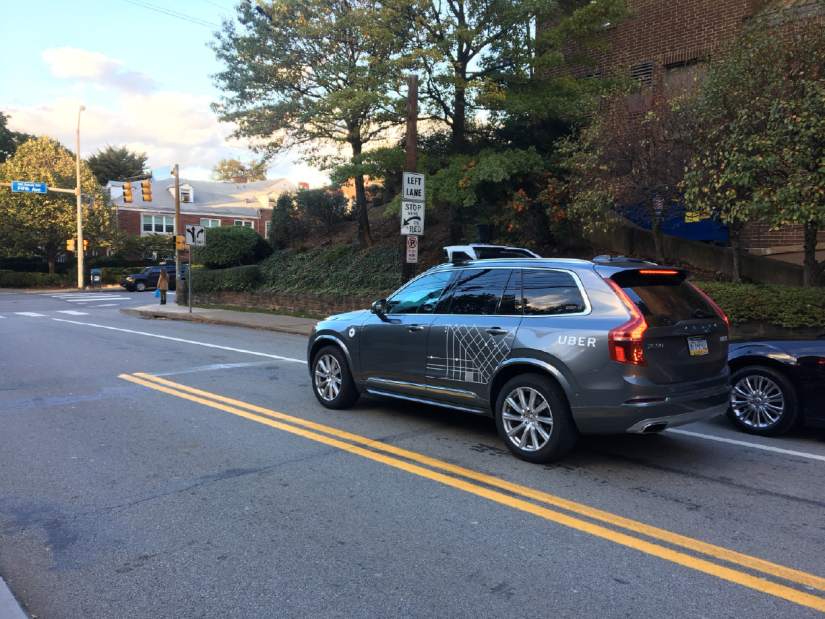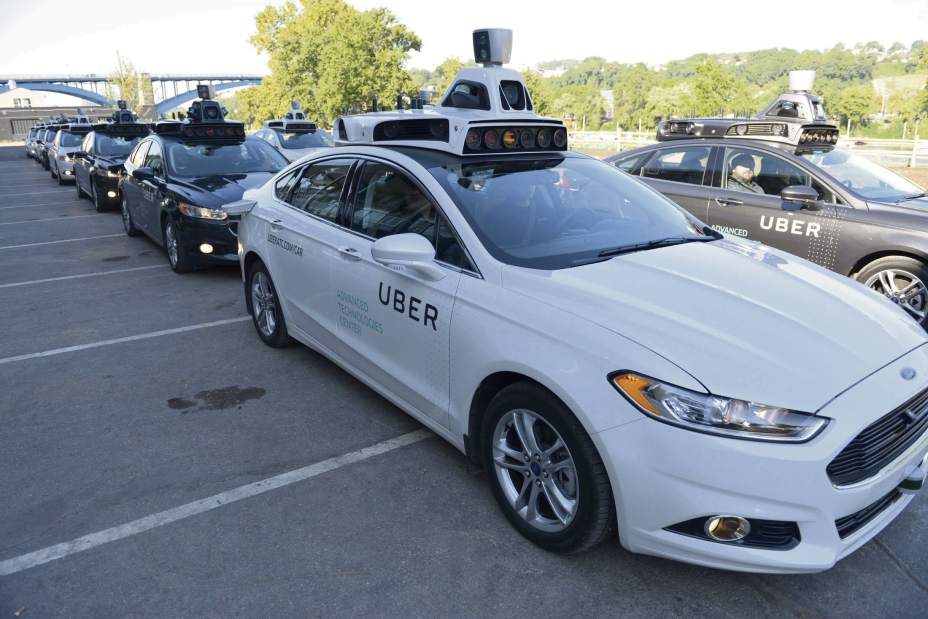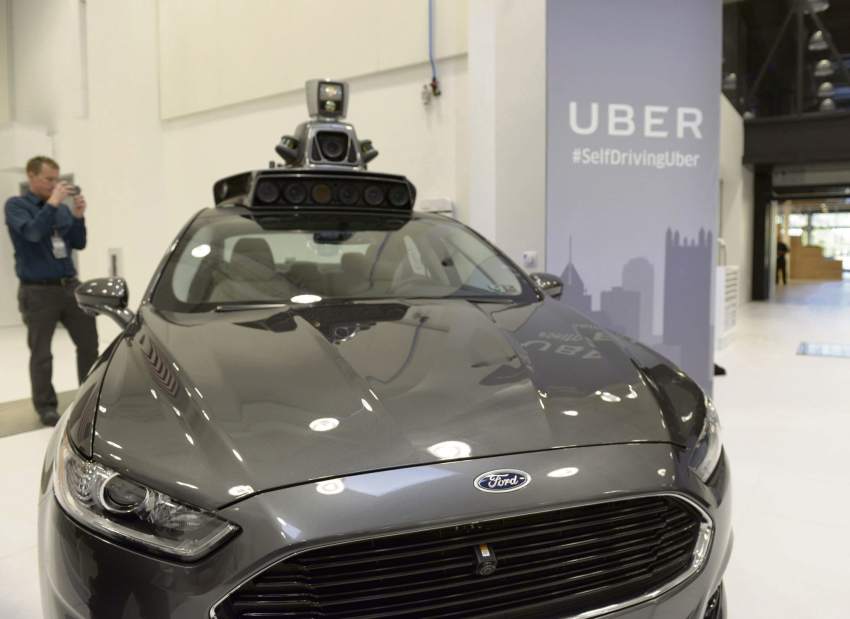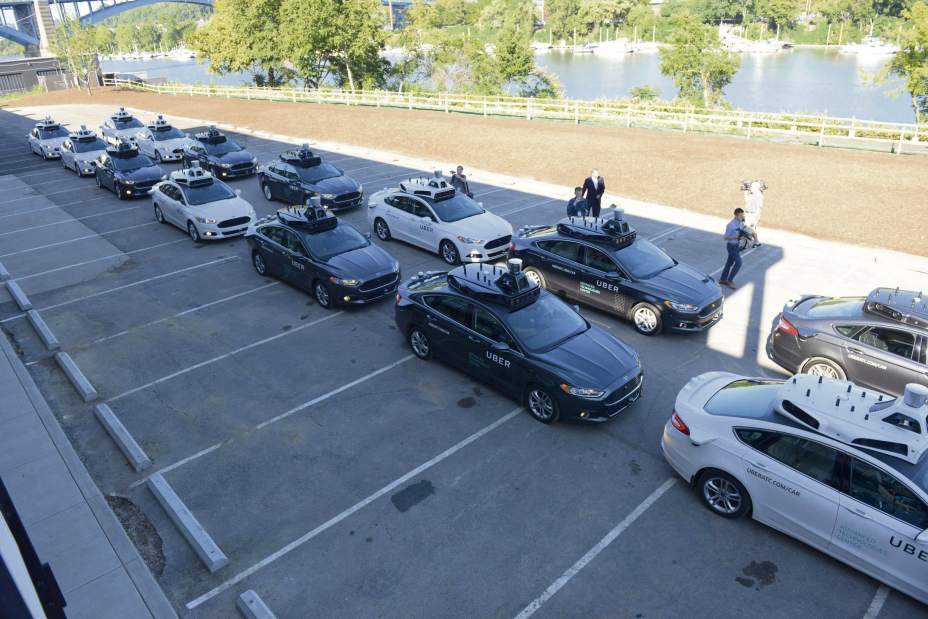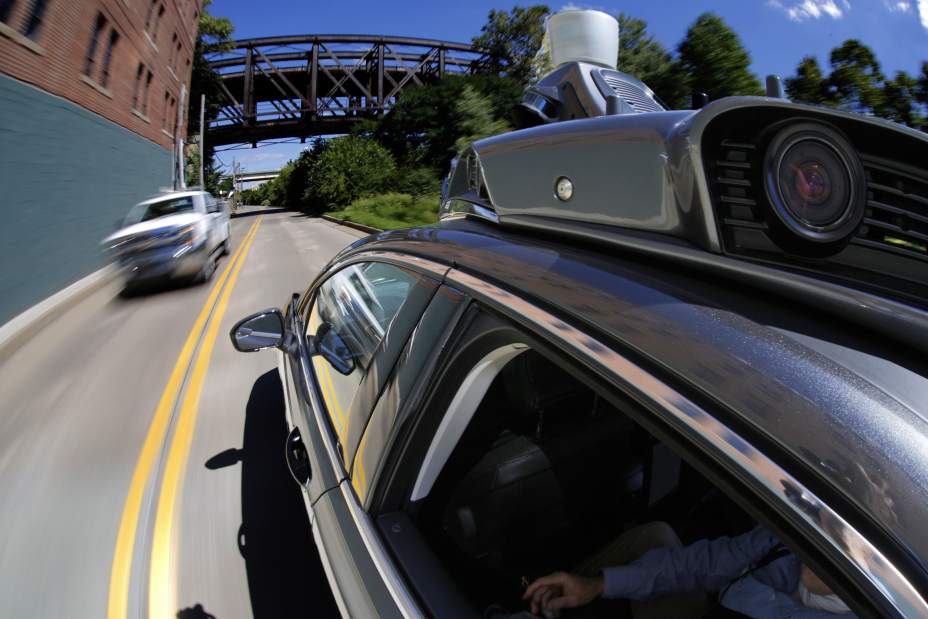Uber eager for its self-driving fleet to tackle winter weather
Bring on the snow and slippery roads.
The folks at Uber's Advanced Technology Center in Pittsburgh are among the few in Western Pennsylvania looking forward to the first significant snowfall and the season of winter driving.
This winter will be Uber's first with its self-driving Ford Fusions and Volvo XC90s on the road transporting passengers.
“We're super curious what it is like in the wintertime,” said Raffi Krikorian, software director and site lead at Uber's ATC. “We did drive our cars around last year on the test track in the snow, and we know for the most part the system works.”
Uber began testing its fleet of autonomous Ford Fusions in the spring and started offering free rides to select customers throughout Downtown and nearby neighborhoods in September. The company has said it will have a fleet of 100 self-driving Volvos on the road by the end of 2016.
Krikorian told the Tribune-Review that Uber hasn't hit the 100 Volvo mark yet, but the company has more Volvos than Fords on the road and still expects to realize the goal of 100 on the road by the end of the year. The Volvos were in a testing phase and not offering rides to passengers when Krikorian spoke to the Tribune-Review in late November.
Uber won't disclose how many autonomous vehicles it has on the road or the number of employees working on self-driving cars in Pittsburgh. An analysis of LinkedIn profiles by the Tribune-Review found at least 300 employees working at Uber's ATC. Pittsburgh Mayor Bill Peduto has said Uber has 500 employees in the city and expects that to double, putting Uber among the top 50 employees in Allegheny County.
Snow poses a host of problems to self-driving cars, autonomous vehicles experts told the Tribune-Review. It changes vehicle dynamics such as the friction between a car's tires and road. It changes the way other drivers behave, prompting slower speeds and more cautious braking, and it changes how the sensors on a self-driving car see the world around it, said Jim McBride, technical leader for Ford's autonomous vehicle project.
Self-driving cars know where they are by taking thousands of readings of lane markers, street signs, curbs, buildings, other cars, pedestrians and more. The car's lasers and sensors have a difficult time making sense of those readings if everything is covered in snow.
Ford tested autonomous Fusions — which the company said have enough power on board to run the autonomous computer system stashed in the trunk — in the snow for a few days last winter at the University of Michigan's Mcity, a test city the university developed for self-driving cars.
“In the case of snow falling, we can actually see snowflakes in the air with our LIDAR sensors,” McBride said.
The company has developed an algorithm that helps the laser radar sensors on the cars distinguish between a snowflake and an obstacle. McBride said when a laser bounces off a snowflake, it often encounters other obstacles on its return trip to the car. Ford has determined if the last surface the beam bounces off is the ground, the car can rule out the obstacle — likely a snowflake — that the beam originally hit as something to avoid.
The algorithm also takes into account the brief amount of time a snowflake will appear in the images created by the lasers. Falling snow shows up for much shorter periods than oncoming traffic.
Ford plans to roll out a fleet of autonomous cars for ride-sharing that won't have steering wheels or gas or brake pedals by 2021. Alan Hall, a Ford spokesman, said the cars initially will be in cities with weather that is “optimal for sensor performance.” The cars will come to cities with worse weather as technology improves.
“Quite frankly, I don't expect to be driving in a blizzard or thunderstorm on Day 1,” McBride said.
McBride, who was among the first at Ford to begin working on autonomous vehicles in 2004, said solving the weather challenges isn't the most pressing issue on his list. There are more predictable and regular occurrences, such as how an autonomous car handles the glare caused by the sun low in the horizon, that need to be cracked first.
Raj Rajkumar, who leads autonomous vehicle research at Carnegie Mellon University, said the university's self-driving Cadillac SRX can handle light or moderate snow but not blizzards.
“When the rain or the snow is heavy, however, we cannot depend on our cameras since the images become too noisy and the reliability of recognizing obstacles becomes degraded. Our laser sensors are also not very useful under those conditions.” Rajkumar wrote in an email to the Tribune-Review. “We typically switch back to manual operations under heavy snow and rain.”
McBride and Krikorian said their companies intend to switch off their autonomous fleets if the weather makes the self-driving cars unsafe.
But Krikorian predicted a day when self-driving cars would be safer in the snow than regular cars.
“I used to live in Boston and the number of times I've gotten into accidents while in the snow is actually high,” Krikorian said. “I'm really excited to try to make a dent in that somehow.”
Aaron Aupperlee is a Tribune-Review staff writer. Reach Aupperlee at aaupperlee@tribweb.com or 412-336-8448.

